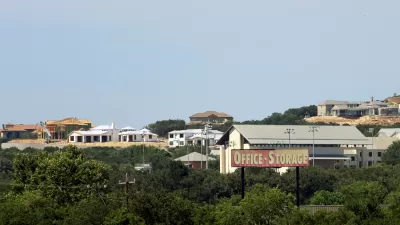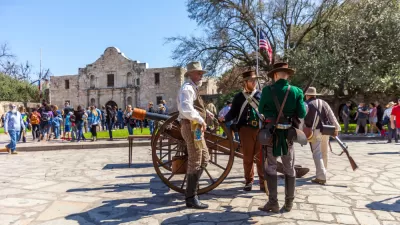San Antonio is changing, and the city's land use regulations aren't living up to the desires of the city's communities, according to one local architect and planner.

"These days, infill projects are everywhere in the collar neighborhoods [of San Antonio]," according to an article by Jim Bailey. Collar neighborhoods (i.e., "the ring of historic streetcar suburbs around downtown), like Lavaca, Dignowity Hill, and Tobin Hill are under the greatest price-point pressure, but infill is found in many other neighborhoods and could continue to spread.
According to Bailey, "[w]ith our population expected to increase by 1 million people over the next quarter-century and a renewed interest in living the good life in non-auto-dependent, economically integrated neighborhoods, these pressures will continue to mount."
While all this infill pressure is building, Bailey writes that battles between developers, neighbors, designers, and planners are getting ugly. To answer the question of why that is, Bailey proposes the following answer: "There is a disconnect between our desire for walkable traditional neighborhoods and what our development code was designed to accommodate."
The article then goes on to provide more insight into the workings of San Antonio's Unified Development Code, its 2015 Comprehensive Plan, and the overlays and exceptions in the code responsible, according to Bailey, for some of the planning and development confusion in the city's communities.
FULL STORY: Infill Development Could Make or Break San Antonio

Planetizen Federal Action Tracker
A weekly monitor of how Trump’s orders and actions are impacting planners and planning in America.

San Francisco's School District Spent $105M To Build Affordable Housing for Teachers — And That's Just the Beginning
SFUSD joins a growing list of school districts using their land holdings to address housing affordability challenges faced by their own employees.

The Tiny, Adorable $7,000 Car Turning Japan Onto EVs
The single seat Mibot charges from a regular plug as quickly as an iPad, and is about half the price of an average EV.

Atlanta Bus System Redesign Will Nearly Triple Access
MARTA's Next Gen Bus Network will retool over 100 bus routes, expand frequent service.

Toronto Condo Sales Drop 75%
In two of Canada’s most expensive cities, more condos were built than ever — and sales are plummeting.

Vehicle-related Deaths Drop 29% in Richmond, VA
The seventh year of the city's Vision Zero strategy also cut the number of people killed in alcohol-related crashes by half.
Urban Design for Planners 1: Software Tools
This six-course series explores essential urban design concepts using open source software and equips planners with the tools they need to participate fully in the urban design process.
Planning for Universal Design
Learn the tools for implementing Universal Design in planning regulations.
Smith Gee Studio
City of Charlotte
City of Camden Redevelopment Agency
City of Astoria
Transportation Research & Education Center (TREC) at Portland State University
US High Speed Rail Association
City of Camden Redevelopment Agency
Municipality of Princeton (NJ)





























